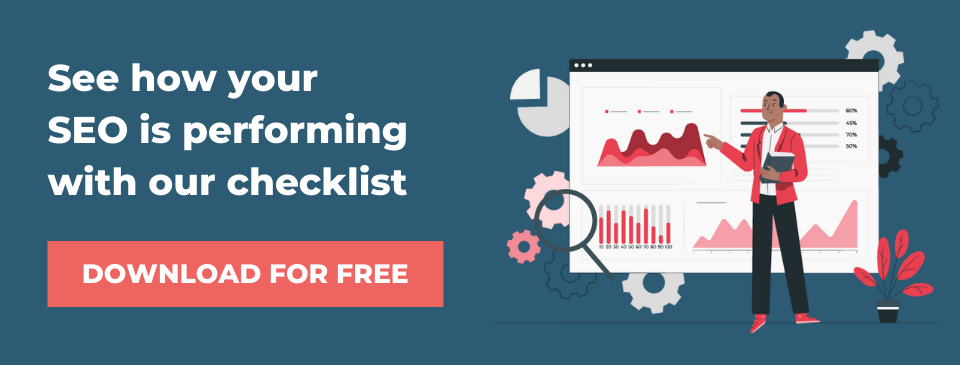Understand SEO Terminology – 68 SEO Terms You Need To Know
When it comes to digital marketing, there are a lot of technical terms and acronyms that can be thrown around that are difficult to understand. To help you get a grasp of what some of these may mean and how they can affect your business, we have created a glossary of the SEO (Search Engine Optimisation) terms that you need to know.
301 (Redirect)- HTTP code to permanently redirect an old URL to a new one to ensure the traffic to the old URL gets taken to the right place.
404 (Broken Link)- HTTP code stating that your server cannot connect to the given URL. This can be due to deleted or moved content, an incorrect URL or the domain has been deleted (among other things).
500- HTTP code for a general error on a website that they cannot give specific information about.
Alt attribute- tags to apply text descriptions to pictures on a website. Doing this allows search engines to use the information of that picture in their rankings, making them just as useful as bodies of text content.
Anchor text- hyperlinked words in a body of text, which indicates to search engines what the link is about (E.g. here is a link to our blog post about learning the basics of SEO)
Backlinks/Inbound links- links to your website from other websites. The more backlinks from trustworthy websites you have, the higher your ranking will be on search engines. While you can buy spaces on other websites to put links to your own, search engines are able to determine these as untrustworthy and spam, so this will actually harm your rankings.
Branded Keyword- these are keywords that include your business/company name related to your domain. (E.g. LNET Digital e-commerce agency leicester)
Breadcrumb- secondary navigation systems on websites to show your location on the website. They can be used to lead you back to where you started, for example:
home > General products > specific products > product 1

Cache- information stored by your web browser about web pages you have already visited in the past. This then allows the browser to load the page faster. You can also see old versions of pages using cache
Canonical URL- A tag put on a URL to highlight to search engines that this is the original source for content, allowing duplicate content to be discounted from rankings
Conversion- when a visitor to your website completes a specific action that you intend for (a call to action). This can be completing a sale, downloading a brochure or even clicking a “contact us” button.
Crawler/bot/spider- an automated programme that crawls through websites to gather information on what it is about. What they find then determines how relevant it is for specific search terms
Crawling- the action of crawlers/bots/spiders scouring the internet for content and URLs related to the keyword search.
Directory- a website with various backlinks to other websites of certain categories. Think of it as a phonebook but for URLs instead of phone numbers.
Disavow- removing links to your website from a search engine ranking factor. You can remove these links that you do not trust or want to be affiliated with, for example, if you believe they are spam or harming your website ranking. Proceed with caution though, as if you disavow a trustworthy link then you may have trouble reinstating it.
Duplicate Content- content that is duplicated on multiple URLs tend to rank lower on search engines due to it not being obvious which one should rank higher, therefore they both get bumped down. It is important to create unique content for your website so you can rank higher in search engine results.
Editorial Link- this is a backlink that isn’t requested or paid for, but organically created through having great content or marketing so that other people will want to link back to your site.
External Link/Outbound Link- a site that you link to from your website. For example, linking to a reputable website for more information on a topic you are discussing. These links should always be to reputable and highly valued sources, and can actually increase the authority of your website.
Featured Snippet- a box of text at the top of search engines, specifically Google, that aims to provide a quick answer for the keyword search. This is often pulled from a website that is listed on the first page of the results.
Google Sandbox- a theory that new websites get stuck with low rankings due to the Google algorithm ranking older sites higher, and are therefore stuck in a ‘sandbox’. This is due to newer websites having less quality content and backlinks, as well as all other ranking factors, that older and more established website will already have.
Google Search Console- a collection of tools utilised by Google to assess and monitor your website’s performance. It also allows you to troubleshoot any problems that may be occurring on your website, as well as managing your backlinks.
Headline- a headline in SEO is much like what you would imagine, but in this case, it utilises keywords about the content it is for so as to provide more relevant information for the search engine crawlers.
Heading tags (H1-6)- These are used to denote the ranking of the heading by the author of the content. For example, the overall heading that outlines the general topic would be H1. H2 could be the next large subheading, H3 would then be any subheadings that fall under H2. This then goes down to H6 as the lowest tag. So to search engines, H1s are seen as most important and H6s are seen as least important.
Indexability- the ability to show your website and all its pages on search engines. You can check this by searching for your business on a search engine and seeing if all of your pages come up.
Index tag- an instruction on a website telling crawlers/bots/spiders to index that page, this is the default.
Internal Link- links that you create on one page of your domain to another page on the same domain. Essentially you are linking back to different information on your website. (E.g. if we linked to our Lnet Digital SEO service page here, this would be an internal link)
Keywords- words or phrases that can summarise the theme of the content (E.g. for this blog article, a keyword would be ‘digital marketing phrases’)
Keyword Stuffing – this is the act of putting in as many keywords as possible into your content, tags, meta descriptions etc. in an attempt to get a higher ranking on search engines. While it is good to include keywords where they are relevant, keyword stuffing can actually harm your SEO by reducing the quality of your content or making the search engine think your site could be spam.
Link Building – this is the process of getting links to your website on other peoples websites. This can be quite tricky, as you want the sites to have high authority and quality content to boost your rankings. It can be done through building good relationships with the owners and businesses’ of other websites and building your brand so people will want to link back to you organically.
Local SEO- The optimising of your website to allow for people local to your business to find you (E.g. putting in a business address or a map on how to find you).
Longtail keyword- These are longer than keywords and are more specific to the content, and so drives more search traffic with intent (E.g. a longtail keyword for this post would be ‘definitions and explanations of key digital marketing phrases’)
Metadata- This is the information that bots/crawlers/spiders provide to search engines that determines your rankings for different search terms. The information collected can include titles, subheadings, keywords in your content and any location-based information you may have supplied.
Meta description- a description of the page in 160 characters that show underneath your page link on search engines and helps determine which keyword searches you show up for.
Meta Title – this is a tag that allows search engine crawlers/bots/spiders to determine what page you are on, and they can also be seen by users so the relevance and ease of understanding of these meta titles are important.
Mobile First- this means that the mobile version of your site will be the starting point for search engines indexing your website. This could affect your rankings if your website isn’t optimised for mobile use.
Mobile friendly– how easy your site is to access and use on mobile devices such as mobile phones and tablets. This makes up one of the ranking factors discussed earlier. With more and more people using their mobile devices to browse the internet, not making your website mobile-friendly could really increase your bounce rate.
NoFollow- A tag for crawlers/bots/spiders to not follow the links on the page, this can be useful on websites such as blogs or forums where people might post their own links in an effort to build on their backlinks, but this can reduce your ranking if they are not suitable sites.
Negative SEO- this is an attempt to reduce your rankings in order to push a competitor higher. An example of this would be someone spamming your link across other websites that are not related or trustworthy.
Noindex tag- a tag on a website that tells crawlers/bots/spiders to not index a page and stop it from showing in search engine result pages.
Off-page SEO- SEO activities that you can perform outside of optimising your web pages. This can include social media marketing and link building.
On-page SEO- This relates to all SEO activities that place on your webpage, such as keyword optimisation, including metadata and making it mobile-friendly.
Organic traffic- The people that are able to find your website through keyword searches or even word of mouth- didn’t find you via paid advertisements.
Page Rank- This is an algorithm used by Google and other search engines to rank web pages for their search results. This is done by determining the importance of the page via the quality and number of links it has.
Page Speed- How fast your web page loads all its content to a visitor. This is also used to determine a page’s rank on search results, so having a faster loading page means that you could rank higher than if your page loaded slowly.
QDF- Query Deserves Freshness- Fresh content on web pages is viewed as more important than ‘outdated’ content. This is because the content may not be relevant or accurate to that search. For example, if you searched ‘how to improve SEO’, then you are not likely to be shown results from 10 years ago as technology and techniques have adapted since then.
Quality Content- This refers to content on your web pages that can be used to answer a search query. To do this, you can employ keyword research to find what people are really searching for, so then you know the areas to write about.
Ranking factor- the components of your website that help search engines determine where you should be shown in search results
Responsive Website- reformatting a website to enable it to be accessible on mobile browsers and so it adapts to varying screen sizes.
Rich Snippet- Any extra information that is shown on a search engines results page, located between the URL and the description of the result. This can include a picture, star rating, etc from information that is on that page. This can be done through structured coding on the website.
Robots.txt- a file that makes suggestions for crawlers/bots/spiders on how to crawl the website’s pages.
Schema- Microdata that makes it easier for search engines to read and understand your website, so they can show it on more relevant searches related to your content.
SEM- Search engine marketing- promoting a website on search engines that can help put you in front of people who are already looking for your topic (E.g. adverts on Google search results pages)
SEO- Search Engine Optimisation- increasing website traffic through making it more visible to search engines (E.g. through using keywords, meta descriptions and unique content- if you’re lost on these, don’t worry, they are all covered below)
SERP- Search Engine Results Page- the list of search results that is brought up after a keyword search is submitted.
Sitemap- A file in the coding of your domain that links to all pages on your website, and can be used to tell search engines when you have updated any content.
Social Signal- measurement of how your content is being interacted with on social media. This can include shares, likes, dislikes and comments.
Subdomain- An additional part of your main domain, created in order to partition off different sections of your website to allow for their own hierarchy as they are technically their own website. An example of this would be Google’s support page, which is support.google.com
SSL Certificate- Secure Sockets Layer- technology that creates an encrypted link between the browser and the web server, so that all private information stays that way. You can see if a website is protected in this way, as the link will contain ‘https://’ rather than the standard ‘http://’. It is universally used for inputting bank details and other such data, as it cannot be hacked by an outside source.
Taxonomy- categorising and classifying pages on a website in order of hierarchy, allowing much better navigation for its users.
Technical SEO- This is the backend SEO that helps crawlers/bots/spiders to access, read and index your website. Examples of technical SEO would be creating meta titles and descriptions and making it mobile accessible. This improves your rankings while you can optimise the content on the front end through keyword research and quality content.
Trust Rank- An algorithm used by search engines to determine how trustworthy your website is by looking at your content and backlinks. If your site is seen as not being trustworthy then this can have a serious impact on your rankings, so checking that you have unique content and ensuring that your backlinks are legitimate is very important.
Unique content- content on your webpage that is not replicated elsewhere. This can boost your ranking in search engines as it is valued quite highly, while duplicated content is penalised.
Unnatural Link- A link from a website (either to yours or from yours) that is not in line with the content on that page- so it is determined to be solely for the use of link building. This can include websites that sell spaces for people to put their links, or spamming your own page with links that have no relevance. If you link to another site for genuine reasons- such as to educate and inform your readers- then this is not an issue.
Usability- Quite simply this is how easy your website is for a viewer to use, both on desktops and mobile devices. Usability is important for SEO as it can mean the difference between a visitor to your website interacting with it or closing the tab. High usability also means that crawlers/bots/spiders are able to index your site more easily due to it being more accessible.
User-Generated Content- This is any kind of content that is created outside of the company that runs the website. It can include photos, reviews, and comments by those that visit your website and use your business. Making your pages optimised for this content can boost the amount of content on your website and increases the number of keywords your page is using without keyword stuffing.
Visibility- This is the estimated percentage of clicks that you will get from organic search results. If your content has high visibility then it is likely to be high in the search results, and therefore it is more likely to be clicked on by the searcher.
Website Authority- Also known as domain authority. A ranking system based on your rank, trust rank and link profiles. While it has no effect on rankings on search engines, it is a useful tool to predict how you may fare in the search results.
Website Navigation- In relation to SEO, website navigation can help boost your results due to being more user and crawler friendly, meaning that people are more likely to stay on your website and crawlers can index it appropriately.
So there you have it, the keywords that can help you better understand what SEO really is and the effects it can have on your business. Properly implemented, SEO can significantly improve not only your rankings on Google but also the number of positive leads you generate. Why not start optimising your website today and watch your business grow!






